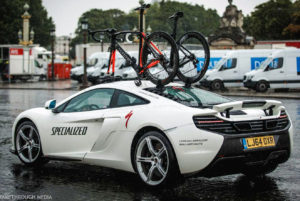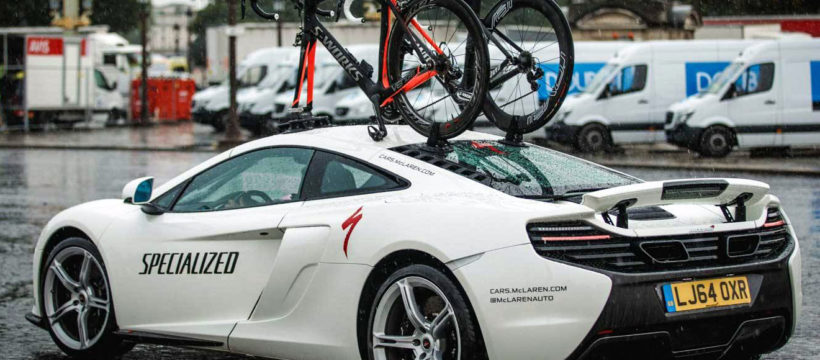A women’s guide to carrying your bike in or on your car
 There’s a myriad of options for carrying your bike in or on your car. I actually carry my own precious road bike inside my car because I drive a hatchback, and can fold the rear seats down, and slide it in, but if you’ve got more than one bike to carry, or don’t have a car with plenty of space, you’ll need to look at some other plan. Here’s Women Who Cycle’s tips on the various options in the marketplace:
There’s a myriad of options for carrying your bike in or on your car. I actually carry my own precious road bike inside my car because I drive a hatchback, and can fold the rear seats down, and slide it in, but if you’ve got more than one bike to carry, or don’t have a car with plenty of space, you’ll need to look at some other plan. Here’s Women Who Cycle’s tips on the various options in the marketplace:
Inside your car
If you own a van, station wagon, hatchback or SUV you’ll probably have the option to safely carry your bike inside your vehicle. If you take this approach make sure your bike is secured well and won’t fall and get scratched or damaged. And make sure if you lie it down, lie it on the non-drive side so you’re not resting on the rear derailleur which can be damaged. I keep an old towel in my boot because I often remove the front wheel to comfortably fit my bike in the car, and can use the towel to keep the wheel and frame from rubbing.
On the roof
Investing in roof racks and bike mounts for the roof is a neat, out of the way option, and there’s plenty of brands selling these types of racks. Thule is one of the most popular, but also one of the most expensive.
There’s a couple of things to consider if you’re keen on roof mounted racks. Firstly if you’re short like me, you’ll struggle to reach up to put your bike on the roof of your car. You can get around this by using a folding step but you also have to consider that you’ve got to lift the weight of the bike above your head. This is okay if you ride a lightweight carbon road bike, but not so great if your bike is a little heavier.
Secondly, the bike or bikes are out of your sight which means you could forget they are there, and drive into a car park or under a bridge that is not high enough for your car with the bike on the roof. This might sound like an unusual or unlikely occurrence, but from my experience of working in a bike shop for five years it was not so unusual. I regularly spoke to customers who had destroyed their bike and damaged their car driving under something!
On a rear rack
There are lots of types of rear racks as well. They range from a basic strap on model that literally straps onto the rear of your car, right up to multi-bike racks that mount on a tow bar. The basic model will set you back around $100 but it’s really only good for occasional use. It’s fiddly to set up, and you need to take it off every time you want to access the boot.
The more popular models attach to either a tow ball or a hitch mount. Both are more sturdy than the strap-on type and come in a huge variety of models to accommodate different numbers of bikes, different weights and types of bike. Some fold down without having to be removed, so you can still access your boot.
There’s even special models available for e-bikes which can carry the extra weight and include a ramp to get the bike onto the rack.
A couple of potential issues you should consider. According to Australian law you must still display your rear number plate so you’ll need to get a small duplicate number plate from your local authority and ensure it’s clearly visible. Also, most manufacturers recommend that carbon road bikes not be carried via their top tube because it can damage the carbon, so go for a model where the wheels sit in the rack instead.
The trick is to do your own research on what will suit you best. Ask your friends, ask your local bike shop, and invest wisely. It’s worth noting that many of these systems can easily be transferred between cars.

